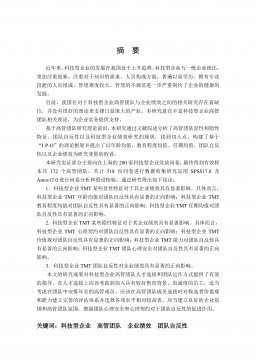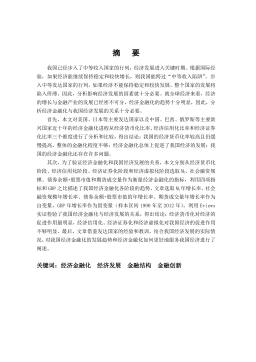声场中PM2.5相互作用机理
VIP免费
摘 要
声凝并作为一种 PM2.5 预处理技术,在颗粒物污染控制方面富有应用潜力。
在含有大量 PM2.5 的烟气进入除尘器前,应用高强度声场对颗粒进行预处理。由
于声波作用,颗粒之间迅速发生相对运动,进而碰撞、凝并,促使颗粒粒径增大,
数目减少。该方法能够提高后续除尘器的除尘效率,从而达到控制 PM2.5 排放的
目的。相比其他 PM2.5 排放控制技术,声凝并具有适应性强、经济性好的优点。
本文针对声凝并技术中所涉及的颗粒相互作用机理和凝并动态过程问题,通
过理论推导建立相关数学模型,利用数值模拟方法研究单颗粒在声场中的运动特
性、颗粒对的相互作用过程,以及大量颗粒在声场中的凝并规律和动态过程。
在考虑粘性阻力、压力梯度力、虚拟质量力、漂移力的情况下,建立单颗粒
在声场中的动力学模型,研究颗粒的振动和漂移特性,结果表明,粘性阻力对颗
粒在声波传播方向的运动起主导作用,压力梯度力、虚拟质量力与阻力相比可以
忽略不计;漂移力虽然相对阻力而言也很小,但由于它是以时间平均力的方式作
用在颗粒上,在较长时间内,漂移力的作用效果变得显著;声波频率低于 10 kHz
时,亚微米颗粒处于零惯性区,具有几乎相同的运动规律;微米尺度颗粒处于有
限惯性区,受颗粒粒径和声波频率的影响,其行为规律有较大差别;在声强级为
150 dB、频率为 2000 Hz 条件下,微米尺度颗粒在声波方向的运动表现出显著的
漂移特性,颗粒所受漂移力主要由非对称漂移力决定。
模拟了颗粒对在声场中的相互作用过程,分析了互辐射压力与声尾流对颗粒
运动产生的不同作用,研究了颗粒间距、颗粒中心连线与声波传播方向的夹角、
颗粒位置、粒径和声波频率、声强对颗粒相互作用过程的影响。研究发现,颗粒
相互作用受到互辐射压力与声尾流作用的共同影响,互辐射压力主要在近距离发
挥作用,声尾流在较远距离也能发挥作用,近距离时互辐射压力作用强于声尾流
作用,两种作用相互耦合有效地促进了颗粒的相互靠近,并导致颗粒发生碰撞。
结果还表明,颗粒距离和夹角越小,颗粒相互作用越强烈,颗粒的碰撞时间越短;
靠近波腹位置的颗粒相互作用较为强烈,靠近波节位置的颗粒,相互作用较为微
弱;较大粒径颗粒间相互作用较强,增加频率和声强,能够促进颗粒间的相互作
用,使颗粒在更短时间内发生碰撞。
基于多重蒙特卡罗方法,构建了颗粒声凝并模型及相应的数值模拟平台。对
不同情况下颗粒的声凝并效果以及声凝并动态过程进行了数值模拟。研究发现,
与同向与重力作用、声尾流作用、互辐射压力作用相比,布朗运动对颗粒的声凝
并效果影响较小;颗粒粒径分布主要集中在亚微米区域时,声尾流作用与互辐射
压力作用效果也较差;增加频率、提高声强能有效促进颗粒的声凝并;对于对数
正态分布的颗粒,中位径越大,声凝并效果越好;随声波作用时间的延长,声凝
并效果增强,但增幅减小,声波作用时间以在 3~5秒内为宜;颗粒凝并的动态
过程模拟有助于分析颗粒声凝并的机理。
关键词:细颗粒物(PM2.5) 声凝并 声波 颗粒动力学
颗粒间相互作用 多重蒙特卡罗方法
ABSTRACT
Acoustic agglomeration as a preconditioning technology of PM2.5, has great
potential in the field of particulate emission control. A high-intensity sound field is
used to treat the gas-particle suspensions, before the flue gas enters the particulate
removal devices. Due to the effect of sound wave, the relative motion, collsion and
agglometation of the particles occur rapidly. As a result, the average particle size is
enlarged and the number of the particles is greatly reduced. Hence the particles can be
efficiently removed by the dust removal devices. Compared to other PM2.5
preconditioning and removal technologies, acoustic agglomeration has advantages in
its good adaptability and cost-efficiency.
This thesis aims at exploring the interaction mechanisms and dynamic processes
of the particles subjected to the sound field. The relavant mathamatical models were
established based on the theoretical derivation and the numerical simulation method
was applied to investigate the motion of a single particle, to examine the interaction of
two particles, and to discuss the agglomeration effect and the dynamic processes of a
large number of particles in the sound field.
Taking into account of the viscous force, pressure gradient force, virtual mass
force and the drift force, the dynamical model of single particle in the sound field was
established. Based on this, the oscillatory motion and the drift of PM2.5 were studied.
The results show that the viscous force dominates the particle motion in the wave
propagation direction, whereas the pressure gradient force and the virtual mass force
are negligible compared with the viscous force. Although the drift force is much less
than the viscous force, it becomes obvious in a relatively long period of time because
of its time-averaged nature. When the frequency is below 10 kHz, the submicron
particles are in the zero inertial range, thus they almost exhibit the same behavior and
the micron-sized particles are in the limited inertial range, their motion differs greatly,
depending on the particle diameter and the sound frequency. In cases with a sound
field with intensity level of 150 dB and frequency of 2000 Hz, the micron-sized
particles dirft dramatically in the wave propagation direction and the particle dirft is
mainly determined by the asymmetric drift force.
The interaction of the particles in the sound field was simulated. The influences
of the mutual radiation pressure effect and the acoustic wake effect on particle motion
were analysed. The effects of the separation distance between the particles, the
orientation, positions, diameters of the particle, the sound frequency and intensity on
the interaction process were examined. It is found that the particle interaction is
affected by the combination effect of the mutual radiation pressure and the acoustic
wake. The mutual radiation pressure effect is important when the two particles are
very close to each other, whereas the acoustic wake effect is also important when the
separation distance is relatively large. The combination of the two effects effectively
promotes the particle approaching and leads to inter-particle collision. The results also
show that the smaller the separation distance and the orientational angle are, the more
intensive the particle interaction is and the shorter the collision time is. The particles
with initial positions close to the wave antinodes interact quite strongly, and those
close to the wave nodes interact relatively weak. The interaction is more intensive for
the larger particles. Increasing the sound frequency and intensity can promote the
particle interaction, so that the particles are able to collide within a shorter period of
time.
Based on the multi-Monte Carlo method, the model of acoustic agglomeration
and the relavant numerical simulation platform were established. The effects and the
dynamic processes of acoustic agglomeration under different conditions were
numerically simulated. It is found that the effect of Brownian motion on the acoustic
agglomeration is very weak compared with the effects of the orthokinetic interaction
gravity, the acoustic wake, and the mutual radiation pressure. When the particle size
distribution is mainly concentrated in the submicron size range, the acoustic wake
effect and the mutual radiation pressure effect are also very weak. Increasing the
sound frequency and intensity can effectively promote acoustic agglomeration. For
particles of lognormal distribution, the agglomeration efficiency is higher when the
medium diameter of the particles is larger. As the effect time of the sound wave on the
particles increases, the agglomeration efficiency increases, but the increase rate is
decreases greatly. The effect time of 3 to 5 s is recommended. The dynamic simulation
can help analyze the mechanisms of acoucstic agglomeration.
Key Words:Fine particles (PM2.5), Acoustic agglomeration, Sound
wave, Particle dynamics, Particle interaction, Multi-Monte Carlo
(MMC) method
目 录
中文摘要
ABSTRACT
第一章 绪 论 .....................................................1
1.1 研究背景 ...................................................1
1.1.1 PM2.5 的危害 ...........................................2
1.1.2 各国空气质量标准中关于 PM2.5 的限值 .....................3
1.2 颗粒物控制技术 .............................................4
1.2.1 传统除尘器发展现状 .....................................4
1.2.2 PM2.5 脱除新技术 ........................................5
1.3 声凝并技术研究进展 .........................................6
1.3.1 实验研究进展 ...........................................6
1.3.2 理论研究进展 ...........................................8
1.4 颗粒物声凝并的数值模拟 .....................................9
1.4.1 区域算法 ...............................................9
1.4.2 矩量法 ................................................10
1.4.3 蒙特卡罗方法 ..........................................10
1.5 本文研究内容与实施方案 ....................................11
1.6 本章小结 ..................................................12
第二章 声场中单颗粒动力学 .......................................13
2.1 引言 ......................................................13
2.2 声场基本原理 ..............................................14
2.2.1 声压 ..................................................14
2.2.2 声速 ..................................................14
2.2.3 声强及声强级 ..........................................15
2.3 声场中颗粒运动模型 ........................................15
2.3.1 声场颗粒动力学模型假设 ................................15
2.3.2 颗粒受力分析 ..........................................15
2.3.3 声场颗粒漂移现象 ......................................17
2.3.4 声场中单颗粒运动模型及方程 ............................20
2.4 数值模拟 ..................................................21
2.4.1 数值模拟平台 ..........................................21
2.4.2 数学模型和计算方法的验证 ..............................22
2.4.3 频率对颗粒运动学的影响 ................................23
2.4.4 颗粒的漂移特性 ........................................26
2.5 结论 ......................................................29
第三章 声场中颗粒对的相互作用过程 ...............................30
3.1 引言 ......................................................30
3.2 颗粒相互作用模型 ..........................................30
3.2.1 互辐射压力模型 ........................................32
3.2.2 声尾流作用模型 ........................................35
3.2.3 颗粒运动模型 ..........................................37
3.3 颗粒相互作用数值模拟平台的构建 ............................39
3.3.1 数值计算方法和条件 ....................................39
3.3.2 程序流程图 ............................................41
3.4 结果分析 ..................................................42
3.4.1 与 González 的实验结果对比验证 ..........................42
3.4.2 互辐射压力作用与声尾流作用效果对比 ....................43
3.4.3 参数改变时颗粒相互作用结果分析 ........................52
3.5 结论 ......................................................61
第四章 颗粒声凝并模型及动态过程模拟 .............................63
4.1 引言 ......................................................63
4.2 运动系统模型 ..............................................64
4.2.1 物理模型 ..............................................64
4.2.2 颗粒运动模型 ..........................................64
4.2.3 流体运动模型 ..........................................65
4.2.4 凝并核函数 ............................................65
4.2.5 描述颗粒凝并的多重蒙特卡罗方法 ........................68
4.3 数值模拟条件和步骤 ........................................72
4.3.1 模拟条件设置 ..........................................72
4.3.2 数值计算流程 ..........................................74
4.4 实验结果对比验证 ..........................................74
4.5 数值计算结果与分析 ........................................76
4.5.1 不同声凝并机理的作用效果对比 ...........................76
4.5.2 不同频率下颗粒的声凝并效果 .............................77
4.5.3 不同声强下颗粒的声凝并效果 .............................78
4.5.4 不同粒径分布下颗粒的声凝并效果 .........................79
4.5.5 不同声波作用时间下颗粒的声凝并效果 .....................79
4.5.6 颗粒的声凝并动态过程 ...................................80
4.6 结论 ......................................................84
第五章 总结与展望 ...............................................85
5.1 全文总结 ..................................................85
5.2 不足与展望 ................................................86
参考文献 ........................................................87
在读期间公开发表的论文和承担科研项目及取得成果 ..................95
致谢 ............................................................96
第一章 绪 论
第一章 绪 论
1.1 研究背景
2010 年,我国国民生产总值高于日本,跃居世界第二位,成为仅次于美国的
世界强国。三十多年的工业化发展成果显著,蓬勃发展的能源工业为工业化大发
展提供了强劲的动力。其中煤作为我国蕴藏量最为丰富的化石能源,被广泛应用
于电力、工业生产等产业中。根据我国 2011 年的统计结果[1],截至 2010 年我国煤
炭总储量为 2793.93 亿吨,可采用量为 1145 亿吨。同年,我国煤炭生产量占能源
生产量的 76.5%以上,煤炭消耗量也占一次能源使用量的 68%以上。与此同时,随
着工业化、城市化的发展,能源消耗也在与日俱增,近年来我国已经跃居世界第
二大能源消耗国。在 2009 年我国煤炭产量为 29.7 亿吨,消费量为 29.58 亿吨,分
别为 2000 年的 2.15 倍和 2.1 倍[1]。可以预见,以煤炭为主的能源消耗模式将在未
来很长一段时间内继续存在。
以我国目前的能源消费结构而论,每年不断增长的巨量煤炭消耗,必然会大
量排放出对环境有害的燃烧污染物。大量污染物排放到大气中,将导致自然环境
的极大破坏,并造成社会生产、生活的重大损失,同时也严重威胁到国民的身体
健康。在燃煤污染物中,除 SOx、NOx等气态污染物外,以烟尘形式排放到大气中
的颗粒物也是重要的环境污染物[2]。当前颗粒物,尤其是可吸入颗粒物(PM10)及
细颗粒物(PM2.5)污染控制已引起政府和各级部门的高度重视[3]。图 1-1 为中国环
境保护部公布的 2000 年-2010 年我国烟尘排放总量和工业烟尘排放量,可见,这
两个量在 2005 年出现一个高峰后,近几年逐渐呈现下降趋势。烟尘中,对环境和
人体危害最大的成分是其中的 PM2.5[5]。图 1-2 为历年北京市 PM2.5 和PM10 浓度变
化,可见,近几年北京市 PM10 的浓度变化不大,甚至略有减少,但 PM2.5 的浓度
却呈现出逐年增加的趋势。
2000 2002 2004 2006 2008 2010
0
400
800
1200
排放量/万吨
年份
年度总量 工业排放量
图1-1 历年烟尘排放总量与工业烟尘排放量[4]
1
声场中 PM2.5 相互作用机理和动态过程研究
2000 2001 2002 2003 2004 2005 2006 2007
0
20
40
60
80
100
120
140
160
180
年平均浓度(g/m3)
年度
PM2.5 PM10
图1-2 历年北京市 PM2.5 和PM10 浓度变化[3]
1.1.1 PM2.5 的危害
PM2.5是指环境空气中空气动力学当量直径小于或等于2.5 μm的颗粒物,又称
细颗粒物。PM2.5是导致能见度降低、雾霾天气、酸雨与气候变暖等一系列环境问
题的重要因素[2]。这类颗粒物由于粒径细微,沉降速度极小,可以长时间悬浮于大
气环境中。大气中大量悬浮PM2.5对光线的散射与吸收效应,将降低大气的能见度。
已有研究表明,颗粒物虽然在大气中所占比例很小,但对城市光学性质的影响可
达到99%[6]。与此同时,PM2.5还会直接吸收或反射太阳对大气的辐射,降低地球温
度,部分地抑制温室效应,影响地球热平衡。再者,PM2.5促进成云作用,使云层
增厚,增强云的反射作用,间接引起气候变化[7,8]。此外,PM2.5比表面积大、吸附
能力强,排入大气中时表面会携带酸性物质,在大气中被云层吸附,促进了酸雨
的形成[6-9]。
PM2.5又被称可入肺颗粒物,是指这类颗粒物可以通过呼吸进入人体肺部,沉
积于肺泡[5]。颗粒物的危害与其粒径密切相关。粒径10 μm以上的颗粒物,难以进
入人的鼻腔、口腔;粒径在2.5 μm至10 μm之间的颗粒物,能够进入人体上呼吸道,
一部分可以痰液的形式排出体外,也有一部分会受鼻腔绒毛的阻挡,对身体健康
的危害较小;而粒径在2.5 μm 以下的颗粒物,则能够进入人体支气管,通过肺部
粘膜层,对肺部气体交换产生影响,甚至渗入血管中,破坏人体血液循环系统[3]。
沉积在肺部的PM2.5具有很长的存留期,通常会在人体内滞留长达数周甚至数年,
并且颗粒粒径越小,越易于吸附对身体有害的细菌、病毒、重金属和有机污染物[3]。
因此,PM2.5对人体健康的影响是长期性的,而且颗粒的粒径越小危害越大。朱彤
和张军峰等[10]对2008年北京奥运会前后大气污染水平的变化与健康年轻人炎症和
2
第一章 绪 论
血栓形成生物标记物的关联进行了研究,发现2008年奥运会期间大气污染水平发
生急剧变化,其中PM2.5下降了27%,在此期间大气污染物水平的变化与健康年轻
人炎症和血栓形成的生物标志物的变化具有相关性,同时还与心血管生理学指标
的急性改变具有相关性。美国环保局在2009年发布的颗粒物科学评估报告汇总中,
也对PM2.5对人体健康的危害进行了全面分析研究[11]。报告以急诊与住院病人为检
查对象,分别对心血管疾病、呼吸疾病、致死率等与短期(24小时)暴露在PM2.5
污染物的关联性,孕妇生产、婴儿生长、癌症、基因诱变、基因毒性等与长期(1
年)暴露在PM2.5污染物的关联性进行了研究,研究成果见下表。
表1.1 暴露于PM2.5中与疾病等的关联性
长期暴露在PM2.5中(1年) 短期暴露在PM2.5中(24小时)
心血管疾病 有关联(Causal) 有关联(Causal)
呼吸疾病 有一定关联
(Likely to be Causal)
有一定关联
(Likely to be Causal)
致死率 有关联(Causal) 有关联(Causal)
孕妇生产、
婴儿生长 有潜在关联(Suggestive)
癌症、基因诱变、
基因毒性 有潜在关联(Suggestive)
1.1.2 各国空气质量标准中PM2.5 的限值
为降低细颗粒物对大气环境和人体健康的危害,世界各国都不断推动立法来
限制PM2.5的排放。美国在立法上走在各国前列[12],1985年对PM10的立法后,1997
年进一步对PM2.5排放进行了立法限制,2006年又进一步提高要求,年均PM2.5限值
为15 μg/m3,24小时平均PM2.5限值为35 μg/m3。欧盟也在1997年颁布了限制PM2.5
排放的法规,2008年颁布的新环境法规规定到2020年的年度PM2.5浓度限值为20
μg/m3,并且不允许超标[13]。其他国家如澳大利亚、加拿大、墨西哥都对PM2.5的日
均浓度做了限制(15~65 μg/m3),而澳大利亚、墨西哥规定了年度PM2.5限值(8~
20 μg/m3)[13]。我国在2012年新颁布的《环境空气质量标准》(GB3095-2012)[14]
中首次将PM2.5纳入其中,该标准将于2016年1月1日开始在全国范围内执行,其中
规定一级区域年均PM2.5限值为15 μg/m3,二级区域年均PM2.5限值为35 μg/m3,一 级
区域24小时平均PM2.5限值为35 μg/m3,二级区域24小时平均PM2.5限值为75 μg/m3。
3
摘要:
展开>>
收起<<
摘要声凝并作为一种PM2.5预处理技术,在颗粒物污染控制方面富有应用潜力。在含有大量PM2.5的烟气进入除尘器前,应用高强度声场对颗粒进行预处理。由于声波作用,颗粒之间迅速发生相对运动,进而碰撞、凝并,促使颗粒粒径增大,数目减少。该方法能够提高后续除尘器的除尘效率,从而达到控制PM2.5排放的目的。相比其他PM2.5排放控制技术,声凝并具有适应性强、经济性好的优点。本文针对声凝并技术中所涉及的颗粒相互作用机理和凝并动态过程问题,通过理论推导建立相关数学模型,利用数值模拟方法研究单颗粒在声场中的运动特性、颗粒对的相互作用过程,以及大量颗粒在声场中的凝并规律和动态过程。在考虑粘性阻力、压力梯度力、...
相关推荐
-
跨境电商商业计划书模版VIP免费
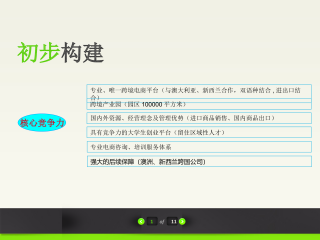
 2025-01-09 27
2025-01-09 27 -
跨境电商方案范文VIP免费
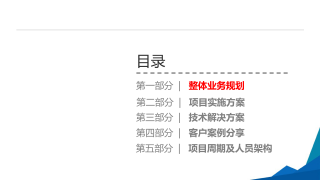
 2025-01-09 14
2025-01-09 14 -
创业计划书VIP免费
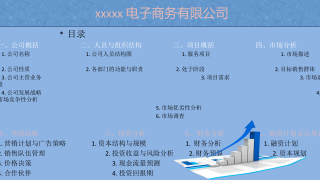
 2025-01-09 18
2025-01-09 18 -
xx生鲜APP计划书VIP免费

 2025-01-09 12
2025-01-09 12 -
跨境电商创业园商业计划书(盈利模式)VIP免费
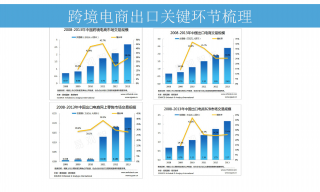
 2025-01-09 8
2025-01-09 8 -
跨境电商计划书VIP免费

 2025-01-09 13
2025-01-09 13 -
绿色食品电商平台项目计划书VIP免费

 2025-01-09 22
2025-01-09 22 -
农产品电子商务商业计划书VIP免费

 2025-01-09 9
2025-01-09 9 -
农村电商平台商业计划书VIP免费
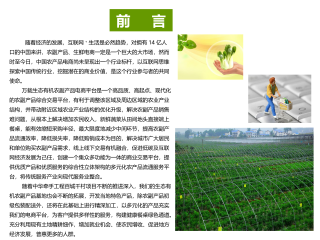
 2025-01-09 13
2025-01-09 13 -
生鲜商城平台商业计划书VIP免费
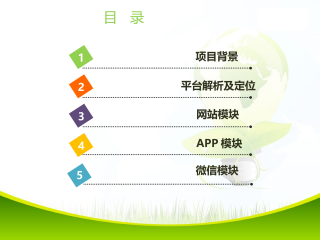
 2025-01-09 21
2025-01-09 21
作者:赵德峰
分类:高等教育资料
价格:15积分
属性:101 页
大小:2.19MB
格式:PDF
时间:2024-11-11


